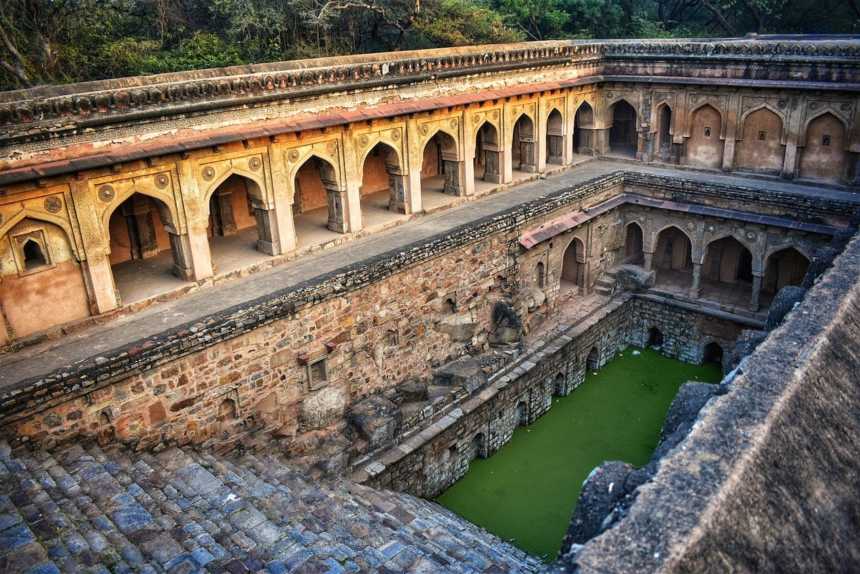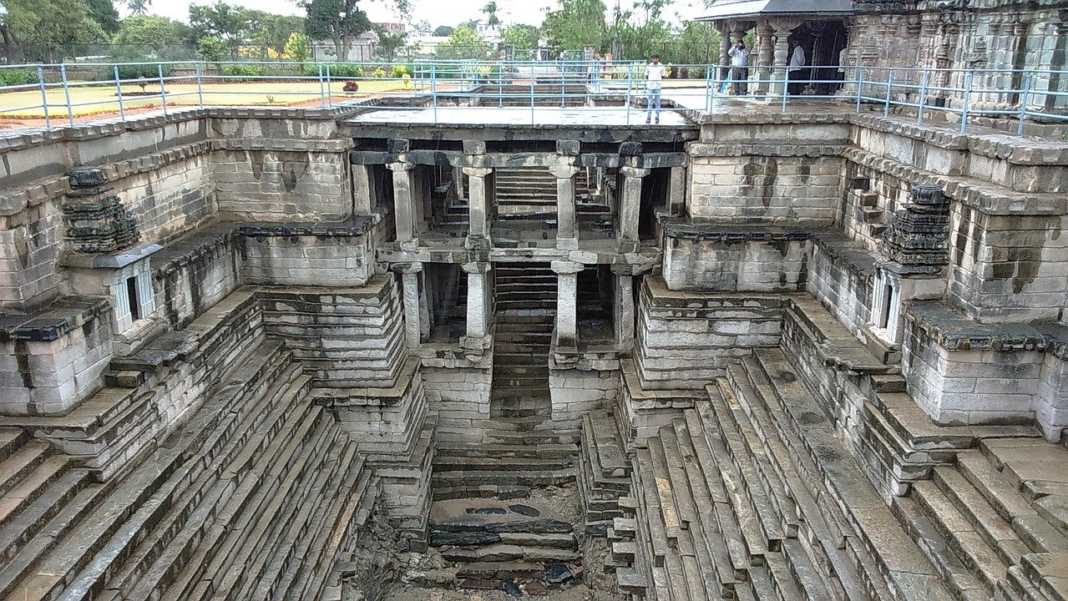Wells, stepwells and reservoirs in ancient India were not just sources of water but a part of a larger network of natural water conservation techniques. While they can be revived to reduce today’s urban water scarcity, they can also inspire modern sustainibility ideas.
The stunning architectural beauty of Ugrasen ki Baoli (also called Agrasen ki Baoli) in the heart of New Delhi is among the top 10 sites to visit in the city. This 14th century baoli (stepwell) with three storeys connected by 108 steps, is not just a popular tourist spot but was a part of India’s water conservation system. If one looks back at the history of civilization, one will see that the first human settlements came up close to waterbodies.
Slowly, people spread out to different parts of the mainland, which had alternate sources of water. Over time, people learnt that water not only flows on the surface but also under their feet. They then started developing the art of digging wells. From the Great Bath of Mohenjo Daro to tanks built in the Mughal era, we have many such examples.

Getty Images
The birth of the baoli
With the passage of time, however, people in ancient India realized that fetching water from the well would become tiresome when the population grows. So, they came up with alternative concepts like Persian wheels, where an arrangement of pulleys, wheels and buckets was made that could easily fetch water from deep wells. But even that required manual labor as storing water in pots and carrying them back home was not easy.
Later, in medieval India, architects and engineers started working on another alternative – constructing steps to reach the water level. An example of which can be seen in Rajon ki Baoli in New Delhi.

These stepwells were not only a place to fetch water and perform chores but also places where people gathered to stay cool during harsh summers. To reap optimum benefits, these stepwells began to be aligned in such a way that the deeper area of the stepwell (the tank) remained towards the south, while the steps descended from north. This was helpful because as India is in the Northern Hemisphere, sunlight would not reach the water surface in the tank. This prevented the water from heating up and evaporating. As a result, the temperature of water and chambers around the water level always remained cooler than the surface.
Wells and tanks
Ancient India’s water management was not limited to baolis alone. There were also tanks (kund) and sluice dams. In fact, religious shrines, which were frequented by hundreds of devotees always had a kund, a stepwell or at least a well aached to it.
Gradually, most of these water structures began to be tagged as blessed and miraculous. Even today, devotees at such shrines line up to fetch water from these holy sources and bring them back to their homes as a mark of blessing. Interestingly, this became a practice across most major religions. From stepwells like the one at Nizamuddin Dargah in New Delhi to tanks like the one at Golden Temple in Amritsar, water became an important element of the pilgrimage.

Help from the past
As civilization developed, the use of tanks and baolis was reduced. Pipelines reached our homes and water was available literally at our fingertips. As we started taking our natural sources of water for granted, stagnant water in lakes, ponds, baolis, and wells was not recycled for long and hence started developing algae and harmful bacteria.
We must understand that most of the medieval water structures are interconnected via underground aquifers. Polluting one will affect all in the vicinity. At same time, if we can clean any one well or baoli, it will have a positive impact on nearby water structures and the ground water level. If we recharge one baoli, several others nearby also get their water back. So, if we can create a strategically-planned network of water recharge pits, that connect to underground aquifers, we can help increase the underground water level of any city.
An example of one of the oldest water recharge pits is Humayun’s Tomb in New Delhi, a monument built on the bank of River Yamuna in the 16th century. Perhaps, the architects then knew that a river might change its course with time, so they planned for the future so that residents around it won’t have to depend only on the river. Today, as India faces water scarcity, we can take lessons from baolis that highlight traditional wisdom and are a sort of guidebook for water conservation. It is time that we adopt the old methods with new technology and save our planet.



